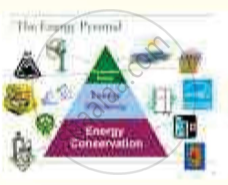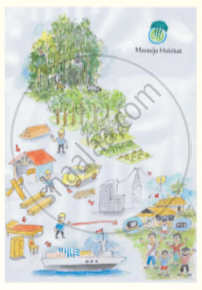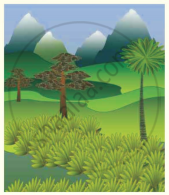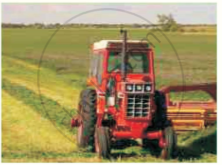Advertisements
Advertisements
Question
Complete the table for the story you have read. By asking and answering questions, exchange information with your partner (for the story you have not read) and complete the other half of the table.
| Name | Shravan | Narendra |
| Age | ||
| Parents | ||
| How he spends a typical day | ||
| Recreation / hobbies | ||
| Hopes / dreams / ambitions |
Solution
| Name | Shravan | Narendra |
| Age | 13 | 13 |
| Parents | None , he is an orphan | Father is a police officer |
| How he spends a typical day | Works in a tea stall making and supplying tea to different offices , collecting payments , washing dishes. | Goes to school,paints or plays in the evening , goes for swimming. |
| Recreation / hobbies | Watching movies | Painting , tennis , swimming |
| Hopes / dreams / ambitions | Getting back the mortgaged land in village | Becoming a police officer . |
APPEARS IN
RELATED QUESTIONS
Answer the following question briefly:
Do you think Private Quelch learnt a lesson when he was chosen for cookhouse duties?
Rain in the hills and rain in the desert present entirely different scenario. In the
hills it revitalises the greenery and freshens the vegetation; it waters the parched
land and relieves the thirsty and panting souls in the desert.
(i) This has been a year of scanty rains. Imagine how the rain would be welcomed
when it pours in the hills and in the desert after a long dry spell. Choose one such
place and describe
(a) What are you likely to see?
(b) What would happen to the rain water?
(c) What would be the scene before and after the rain?
(ii) How would you express rain as
Suppose you are on a ship, far out into sea. Something happens, and you find yourself in the water. The ship continues on its journey. Discuss the following with your partner and share your views with the class
• How long do you think you can stay alive in the water?
• How will you know which way to swim?
• What dangers will you face?
Look at the numbers on the map, and match them with the names given in the box below.

Read the following excerpts from newspapers on various environmental issues.
Ban the Bag
The Indus Valley Civilisation left beautifullycrafted pottery that speaks volumes of the advances its people made. After 3,000 years, if the ruins we leave behind are excavated, chances are only plastic bags would be dug up. It may sound like an exaggeration, but these bags are not biodegradable. Apart from causing emissions when these are manufactured, noxious fumes are released while these are being burnt or disposed off. So, be kind to Mother Earth the next time you go shopping for groceries, remember to carry a cloth bag with you.

What India Should Do
India has released the National Action Plan on Climate Change. Is it adequate? Is there more that the country can do? Here are some ways how we can make a difference.
(a) SOLAR MISSION
1) To promote the use of solar energy through solar photovoltaic and thermal systems for power generation .
2) To integrate other renewable energy technologies like biomass and wind. 
(b) ENERGY EFFICIENCY
1) To mitigate GHG through sector-specific and cross-cutting technology and fuel switch options.
2) To use more LNG and biomass fuels besides seeking tech transfer. 
(c) SUSTAINABLE HABITAT
1) To promote energy efficiency in the residential and commercial sectors through LPG use.
2) To manage municipal solid waste and urban public transport in a better way. 
(d) WATER MISSION
1) To promote efficient water use, augment supply in critical areas and ensure effective management of water resources.
2) To have better management of surface and groundwater,and conserve wetlands. 
(e) SUSTAINING HIMALAYAS
1) To enhance monitoring and conservation of the Himalayan ecosystems, empower local communities for management of ecological resources and promote sustainable tourism. 
(f) GREEN INDIA
1) To reduce fragmentation of forests, enhance public and private investments for plantation, upscale joint forestry management and promote conservation of biodiversity. Need to afforest degraded lands.

(g) SUSTAINABLE AGRICULTURE :
1) To focus on four crucial areas - dry land agriculture, risk management, access to information and promoting the use of biotechnology.
2) To develop drought and pest resistant varieties. 
Fill in the blanks :
1. The next generation is not likely to see the tiger because of _________________________
2. ________________ laws against poachers must be enforced.
3. The responsibility of protection of the tiger lies with the ___________________
4. One of the reasons for Tiger becoming extinct is _______________
5. Destroying nature means ________________
6. ___________________ , ________________ ,and _______________ are different types of tigers.
7. ______________ is a wild life conservation project.
8. Tigers are found in the evergreen and monsoon forests of the ______________
9. Though tigers are mostly nocturnal, __________ species may also be active during the day.
10. The body length of the tiger is _______________ cm.
Massive poaching in the past two years has wiped out the entire tiger population at one of the tiger reserves in India,' claims an investigation report.
Study the information in 7 and 8 and notice how the number of tigers are falling. Using the information, write a paragraph in about 150 words on Project Tiger.
Given alongside are the pictures of two boys - Shravan Kumar and Narendra Kumar. (They are not related.) Working with a partner, look at their pictures and predict how each boys lives. Write your answer in points .

| Shravan Kumar | Narendra Kumar |
In groups of four , use the language used in Question 5 to give advice in the following situations :

A student from a lower class asks you to help her illustrate for her class, the use of different prepositions.
In groups of four, choose one of the following lists of prepositions and draw simple pictures to illustrate their meaning.
| Time | Place | Movement |
| since | on | through |
| at | in | along |
| until | behind | across |
| for | beside | down |
| after | above | round |
